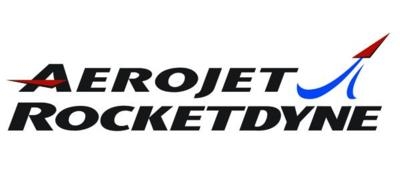Mon, Dec 08, 2014
Large TelComm Satellite Placed Into Orbit
Aerojet Rocketdyne has completed its 100th geosynchronous satellite apogee insertion using its iridium/rhenium High Performance Apogee Thruster (HiPAT), including first and second generation design configurations. The successful insertion was achieved with a large geosynchronous telecommunications satellite, built by commercial satellite manufacturer, SSL, which was recently launched. The milestone will be commemorated by a ceremony at the company's Redmond, Washington facility, with SSL officials in attendance.

The R-4D-15 HiPAT(TM) performs orbit-raising maneuvers for many of the world's communication satellite platforms. Variants of the R-4D have played critical roles in NASA missions such as Cassini's exploration of Saturn and its moons; as well as the European Space Agency and the Japan Aerospace Exploration Agency International Space Station re-supply vehicles.
"The model R-4D-15 HiPAT(TM) is the highest-performing rocket engine in its class," said Warren Yasuhara, vice president of Space Systems at Aerojet Rocketdyne. "By offering a higher specific impulse than
comparable engines, the HiPAT(TM) reduces the total amount of fuel required for the mission and allows spacecraft operators to trade propellant mass for high-value payload."
The R-4D product line includes a series of liquid bipropellant engines that use the propellant combination of nitrogen tetroxide (MON-3) oxidizer and monomethylhydrazine (MMH) fuel. These propellants are storable at room temperature and do not require a separate ignition source, simplifying many higher-level integration issues while still providing high performance.
The R-4D was originally developed as a thruster for the reaction control systems for the Apollo Service Module and the Lunar Excursion Module. The HiPAT is the fifth generation of the R-4D 100 lbf thrust class of liquid bipropellant engines and the second generation of high performance iridium/rhenium engines. "This engine has incredible lineage," said Steve Harper, Bipropellant Propulsion Product Line manager at Aerojet Rocketdyne. "Dating back to Apollo, Aerojet-Rocketdyne's R-4D family of 100 lbf bipropellant engines holds an impressive record of 100 percent mission success throughout five decades of service in space."
More News
Airport Marking Aids Markings used on runway and taxiway surfaces to identify a specific runway, a runway threshold, a centerline, a hold line, etc. A runway should be marked in ac>[...]
"It is extremely difficult, if not impossible, for manned aircraft to see a drone while conducting crop-enhancing and other aerial applications at low altitudes and high speeds. We>[...]
Aero Linx: The Skyhawk Association The Skyhawk Association is a non-profit organization founded by former Skyhawk Pilots which is open to anyone with an affinity for the A-4 Skyhaw>[...]
“The T-54A benefits from an active Beechcraft King Air assembly line in Wichita, Kansas, where all required METS avionics and interior modifications are installed on the line>[...]
Aero Linx: Aerostar Owners Association The Association offers the Aerostar Owner a unique opportunity to tap an invaluable source of information concerning the care and feeding of >[...]
 ANN's Daily Aero-Term (04.28.24): Airport Marking Aids
ANN's Daily Aero-Term (04.28.24): Airport Marking Aids Aero-News: Quote of the Day (04.28.24)
Aero-News: Quote of the Day (04.28.24) ANN's Daily Aero-Linx (04.28.24)
ANN's Daily Aero-Linx (04.28.24) Aero-News: Quote of the Day (04.29.24)
Aero-News: Quote of the Day (04.29.24) ANN's Daily Aero-Linx (04.29.24)
ANN's Daily Aero-Linx (04.29.24)



